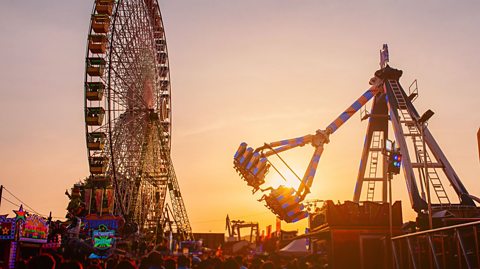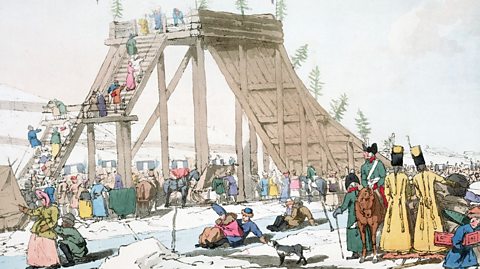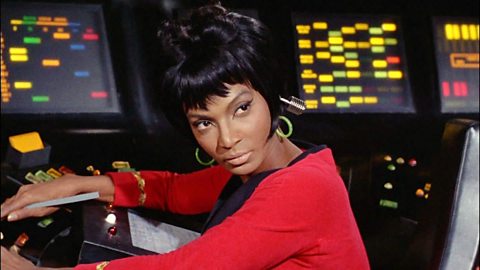Rollercoasters, games and candy floss - just a handful of things that come to mind when thinking about theme parks.
For thrill-seekers, these spaces can provide a haven to escape daily life and be whisked away in a world of fantasy. For others, it offers an opportunity to conquer their fears. But what came before the high-speed, adrenaline-filled amusements we know today?
“óĻó“«Ć½ Bitesize explores the long and surprising history of the theme park.

The origins of the theme park
While the theme park industry as we know it today reached new heights in the 20th Century, its history stems back hundreds of years earlier. The amusement park has its roots in the religious festivals and trade fairs of the ancient and medieval ages.
The worldās oldest operating amusement park is located in a deer forest north of Copenhagen, Denmark. Bakken, or Dyrehavsbakken as it is officially named, was founded in 1583 when a natural spring was discovered. During this time, locals faced poor water conditions - which led to the forest becoming a place for people to gather.
Over the years, entertainers and travelling salesmen decided to pitch up, perform tricks and sell goods to the large crowds. As its reputation grew, the park began to upgrade its facilities, attract circuses and develop new moving rides.
Between the 16th and 18th Centuries, resort grounds called pleasure gardens began to appear across Europe. These gardens, which were often royal gardens opened to the public, are also credited for forming the basis of the modern amusement park. One of the most popular gardens was Vauxhall Gardens in London, which hosted a number of acrobatic acts, firework displays and music performances. Mozart even performed there in 1764!
Eventually the distinction between pleasure gardens and amusement parks became blurred throughout Europe and Scandinavia.

Entertainment and rides
One key component of the theme park is of course the rides, and particularly the rollercoaster. The rollercoaster has its origins in the Russian ice slides of 17th Century, which were built as entertainment for the public. These slides were constructed from timber frames over frozen water and could reached up to 21m (70ft) in height.
Until the widespread use of electricity in the Victorian era revolutionised the fun fair landscape, most rides were powered by steam. One of the first recorded rides in the UK was a steam-powered merry-go-round that was constructed by a man named Thomas Bradshaw in 1863.
Prater, a pleasure garden in Vienna, opened a section named the Wurstelprater, an amusement park opened in 1766. The park became famed for its Giant Ferris Wheel, which was constructed in 1897 and became a distinct landmark in the cityās skyline.
Other rides grew in popularity over time. The early models of the dodgems existed for many years, but the ride didnāt become a British fairground favourite until it was introduced in 1928.
Amusement parks as we know them today
In the 18th and 19th Centuries, fairs joined the racks of travelling attractions, as travelling acts such as circuses and A collection of wild animals kept for display - predating the modern zoo. gained in popularity.
But gradually, the idea of a permanent, enclosed amusement park space began to emerge. When Coney Island developed an amusement area at the turn of the 20th Century, it became one of the best-known permanent parks in the United States.
Manchesterās Belle Vue Amusement Park was one of the first American-style rollercoaster attractions in the UK. While the attraction first opened in the 1870s as a zoological centre, it eventually grew into a entertainment hub for funfairs, live music and food. At its peak, the park drew in over 2 million visitors each year, with rides such as the dodgems and the ghost train.
Following the Second World War, the development of novelty fairgrounds and their rides grew rapidly. One of the best known theme parks, Disneyland, opened in California on 17 July 1955 as the USās first large park centred around a specific theme.
When the park opened, it featured four themed areas, including Tomorrowland and Adventureland. The concept allowed visitors to ride on attractions centred on their favourite films and meet cartoon characters
In 2022, the Magic Kingdom park at Disney World in Florida was crowned the worldās most-visited theme park, attracting a reported 17.1 million visitors.
This article was published in August 2023
Five fictional jobs you wish you could have
Read about five awesome jobs and careers from fiction we wish were real.

When beds made history
Explore stone 'mattresses' from 5,000 years ago, Van Gogh's bedroom and John and Yoko's protest from a hotel room

āDo I really sound like that?ā Why we cringe at hearing our own voices
Listening to a recording of our own voice can be interesting, to say the least. But why does this happen?
